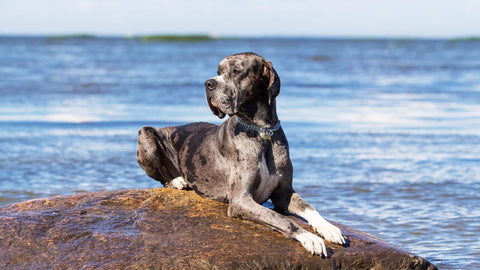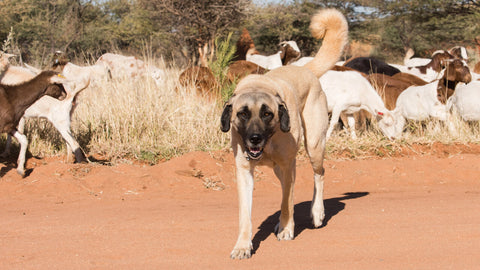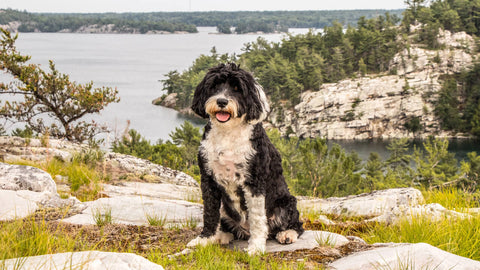Contents
- Introduction to the Great Dane
- Appearance of the Great Dane
- Coat and colours of the Great Dane
- How big can a Great Dane get
- The character of the Great Dane
- Training the Great Dane
- Who is the Great Dane suitable for
- Is the Great Dane a family dog
- Care of the Great Dane
- Feeding the Great Dane
- How much does a Great Dane shed
- How old does a Great Dane get
- Typical Great Dane diseases
- How much does a Great Dane puppy cost
- What to look out for when buying a Great Dane
- Great Dane profile
Introduction to the Great Dane
The Great Dane, also known as the ‘Grand Danois’, is one of the largest dog breeds in the world and is known for its impressive appearance and friendly and even-tempered character. Originally bred as a hunting and guard dog, the Great Dane has now become a popular companion dog Despite their imposing size, they are often described as ‘gentle giants’. This breed is known for its loyalty, intelligence and love of family, which makes them a wonderful pet – provided you are willing to meet their special needs.
Appearance of the Great Dane
The Great Dane impresses with its imposing stature, which is characterised by elegance and power. They have an elongated, strong and muscular build that suggests a mixture of strength and grace. Their head is elongated with a pronounced forehead and medium-length drooping ears, which are often cropped (although this is now banned in many countries) Their legs are long and strong, which contributes to their outstanding size, while their gait appears springy and proud. The tail is long and carried in a gentle curve.
Great Dane Coat and Colours
The Great Dane's coat is short, dense and close-lying. It feels smooth and, with good care, has a glossy finish. Great Danes come in a variety of colours, with five officially recognised shades:
Yellow: a rich gold tone with a black mask.
Brindle: yellow base colour with black stripes (so-called ‘tiger stripes’) and black mask.
Black: deep black, shiny fur.
Harlequin: white base colour with irregular black spots.
Blue: A pure steel blue
How big can a Great Dane get?
The Great Dane is one of the largest dog breeds. Males reach a shoulder height of about 80 to 90 cm and can even grow taller in exceptional cases Females are slightly smaller and usually measure between 72 and 84 cm. The weight of males varies between 70 and 90 kg, while bitches weigh between 45 and 65 kg. This size requires a lot of space, both indoors and outdoors.
The character of the Great Dane
The Great Dane is known for its good-natured and even-tempered character. Despite their impressive size, they are often gentle, playful and affectionate. They form a close bond with their family and are extremely loyal. Their social and friendly nature makes them excellent companions that also get along well with children and other pets However, Great Danes are alert and have a natural protective instinct, which also makes them good guard dogs, without being aggressive.
Training the Great Dane
Due to their size and strength, consistent, loving and early training of the Great Dane is essential. This breed is intelligent and learns quickly, but it can also be stubborn Positive reinforcement, patience and clear leadership are the key to successful training. Dog training schools or professional dog trainers can help with training, especially for first-time owners. Good socialisation as a puppy is also important so that the Great Dane reacts safely and calmly to its environment when it grows up.
Who is the Great Dane suitable for?
The Great Dane is ideal for people who have plenty of time and space for a large dog and are aware of the responsibility that comes with this breed. A house with a garden is advantageous so that the Great Dane has enough freedom of movement. Since they need a lot of attention and human companionship, the Great Dane is not suitable for people who are out all day In addition, potential owners should consider the financial aspects such as food, veterinary costs and space requirements.
Is the Great Dane a family dog?
Yes, the Great Dane can be an excellent family dog They are gentle, loving and patient, especially around children. Nevertheless, you should always keep an eye on the interaction between children and the dog, as the Great Dane's size and strength can inadvertently lead to unintentional mishaps. Their friendly and even-tempered nature makes them a wonderful companion who enjoys taking part in all family activities.
Grooming the Great Dane
The short-haired coat of the Great Dane is relatively easy to care for. Regular brushing helps remove loose hairs and keep the fur shiny. Due to their size and weight, it is important to check their claws regularly and trim them if necessary. Their ears should be kept clean and their teeth brushed regularly to prevent dental problems Since Great Danes are sensitive to the cold, they should be kept indoors when temperatures are low.
Feeding the Great Dane
Due to their size, Great Danes have high nutritional needs. A balanced diet that is rich in protein and nutrients is crucial for their health and well-being Feeding should be spread over several meals a day to minimise the risk of gastric torsion, a common and dangerous condition in large dogs. Special foods for large dog breeds or customised feeding plans can help meet the specific needs of the Great Dane.
How much does a Great Dane shed?
Great Danes shed relatively little compared to many other breeds, especially since they have short fur. Regular brushing can help to minimise shedding and keep the fur healthy and shiny. During the change of coat in spring and autumn, hair loss can be a little more pronounced, but this can be easily controlled by brushing more.
What is the life expectancy of a Great Dane?
Unfortunately, the life expectancy of a Great Dane is quite short, at around 6 to 8 years. Larger dogs generally tend to have a shorter life expectancy than smaller breeds. However, good care, a balanced diet and regular visits to the vet can help to prolong the Great Dane's life and improve its quality.
Typical diseases of the Great Dane
Like many large dog breeds, the Great Dane is prone to certain health problems. These include:
Hip dysplasia: a malformation of the hip joint that causes pain and restricted mobility.
Stomach torsion: A life-threatening twisting of the stomach that requires quick action.
Heart problems: Especially dilated cardiomyopathy is common in Great Danes.
Bone problems: Due to their rapid growth, bone problems such as osteosarcoma (bone cancer) can develop.
Regular health checks are therefore essential for this breed.
How much does a Great Dane puppy cost?
The price of a Great Dane puppy can vary greatly depending on the breeder, pedigree and geographical location. In general, the price is between CHF 1500.00 and CHF 2500.00. A reputable breeder who values health, good rearing conditions and solid genetics will usually be a little more expensive It is important not to be guided by price alone, but to keep an eye on the quality and reputation of the breeder.
What to look out for when buying a Great Dane.
When buying a Great Dane puppy, you should make sure that the breeder is reputable and that the puppies are raised in a clean and family-like environment The parents should be healthy and have the appropriate health certificates to rule out hereditary diseases. A good breeder will also ask potential buyers questions to ensure that they can meet the requirements of this large breed.
Great Dane profile
Origin: Germany
Size: 72–90 cm shoulder height
Weight: 45–90 kg
Life expectancy: 6–8 years
Coat: Short, smooth, in various colours (yellow, brindle, black, harlequin, blue)
Character: Good-natured, friendly, loyal, alert
Care requirements: Medium (regular brushing, care of claws and ears)
Nutrition: High food requirement, spread over several meals
Suitable for: Families with space and time, people with dog experience




Comments (0)
There are no comments for this article. Be the first one to leave a message!